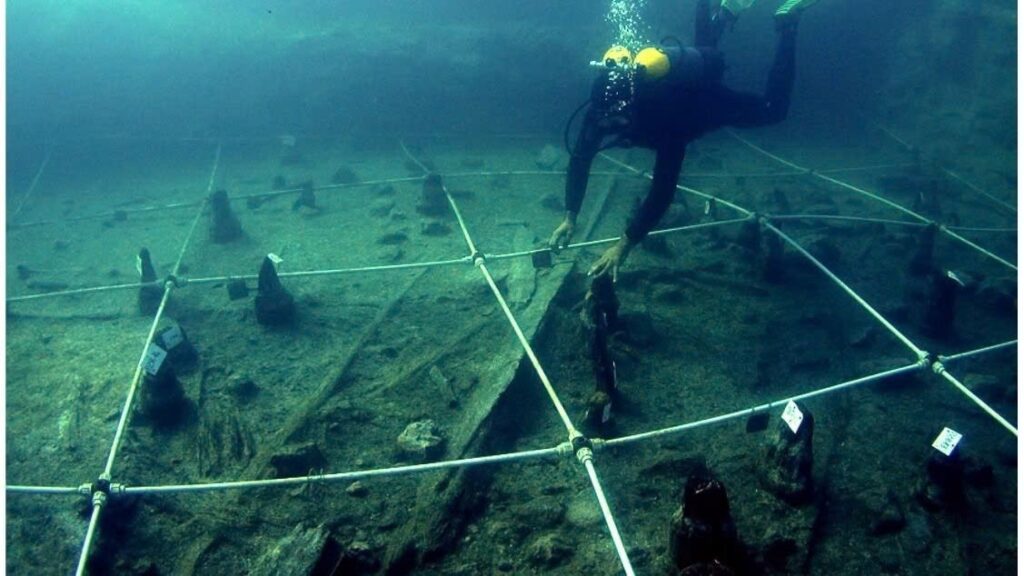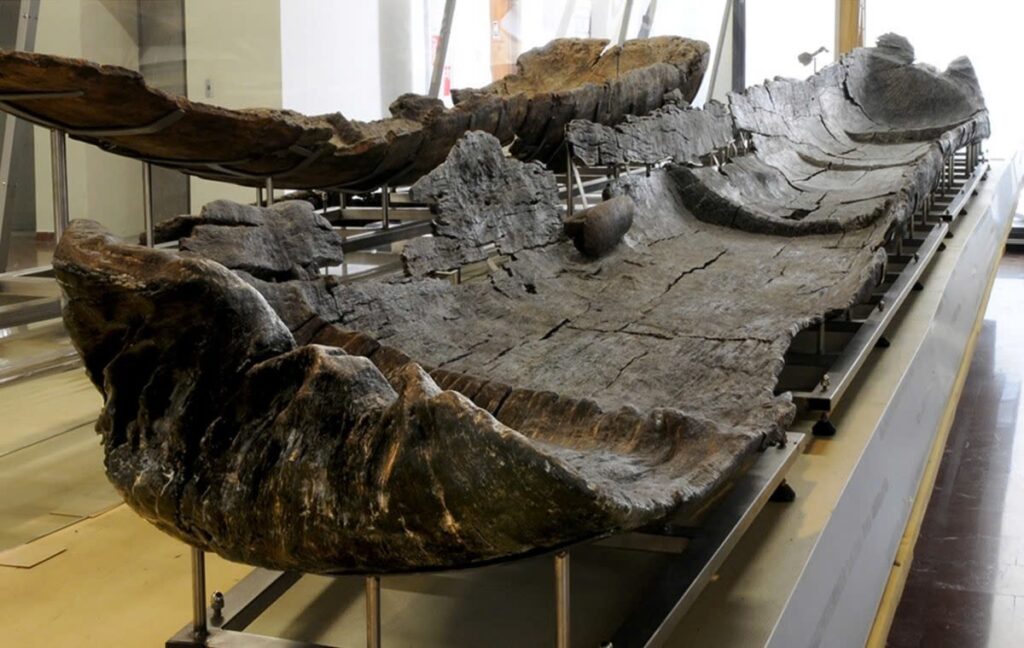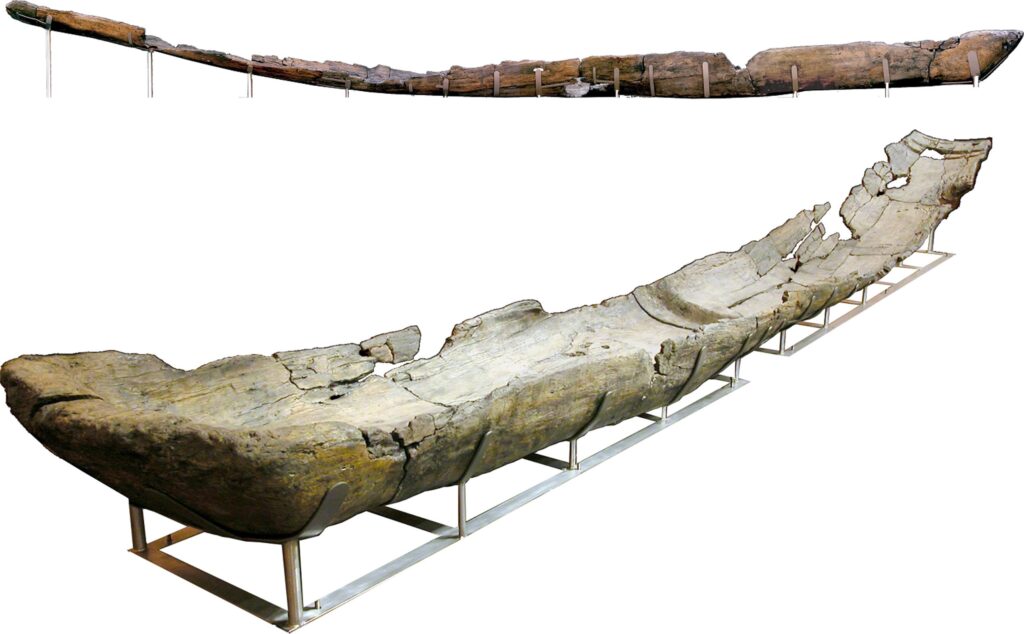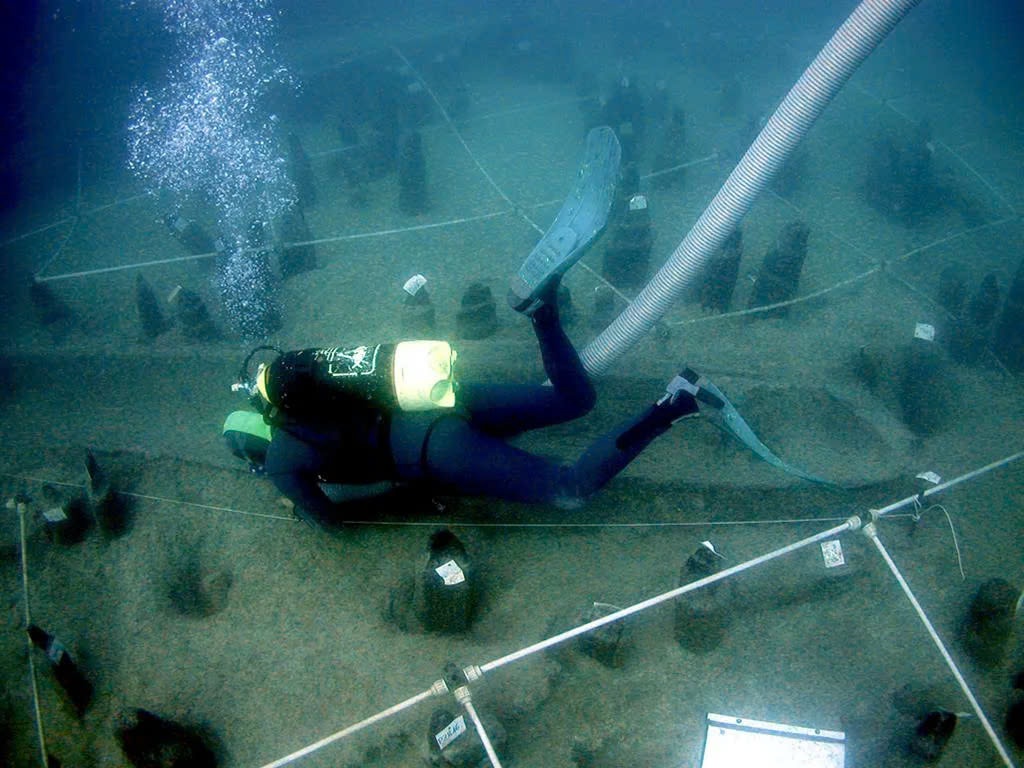Unearthing the Secrets of Neolithic Navigation
Beneath the waters of an Italian lake, a groundbreaking discovery has cast new light on the maritime ingenuity of our Stone Age ancestors. Five ancient canoes, dating back more than 7,000 years, have surfaced as silent testaments to a transformative era in human history. Found at the Neolithic village of La Marmotta near Rome, these vessels are not only the oldest of their kind in the Mediterranean but are also reshaping our understanding of early nautical technology.

A Technological Leap in the Stone Age
Crafted between 5700 and 5100 BC, these canoes display a level of craftsmanship far beyond expectations. Made from four different types of wood, they incorporate advanced construction techniques, including transverse reinforcements—a design choice that enhances stability. One canoe even features T-shaped wooden fittings, possibly for securing sails—challenging long-held assumptions about Neolithic boat-building capabilities.

Navigating the Dawn of Civilization
This discovery extends the timeline of Mediterranean seafaring by thousands of years. Long before the rise of Phoenician and Greek maritime dominance, these early navigators were already traversing coastal waters, facilitating the exchange of goods, ideas, and culture. The presence of stone tools from distant islands at La Marmotta further supports the theory of organized seafaring and trade routes in the Neolithic era.

A Legacy That Shaped the Future
The similarities between these ancient vessels and later shipbuilding techniques suggest a continuum of nautical innovation that would shape millennia of maritime exploration. This discovery underscores how early humans were not just resourceful survivors but also pioneers of technology, setting the stage for the great naval civilizations to come.

Looking Ahead: What More Lies Beneath?
As researchers continue to explore the depths near La Marmotta, there is hope that even more ancient boats remain hidden beneath the silt, waiting to reveal new chapters in humanity’s seafaring past. With each discovery, we gain a deeper appreciation of our ancestors’ ability to adapt, innovate, and navigate the vast waters of the ancient world.


